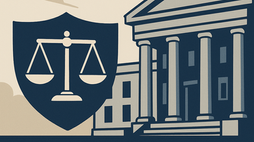


Gregory T. Moro, Esq.
Nov 74 min read



Megan R. Moro, Esq.
Oct 264 min read



Gregory T. Moro, Esq.
Oct 75 min read



Gregory T. Moro, Esq.
Sep 272 min read



Gregory T. Moro, Esq.
Sep 35 min read



Megan R. Moro, Esq.
Aug 233 min read



Gregory T. Moro, Esq.
Aug 84 min read



Megan R. Moro, Esq.
Jul 254 min read



Gregory T. Moro, Esq.
Jun 293 min read



Megan R. Moro, Esq.
May 314 min read



Gregory T. Moro, Esq.
May 235 min read



Megan R. Moro, Esq.
May 142 min read






Policing and criminal investigations are becoming more sophisticated by the day!